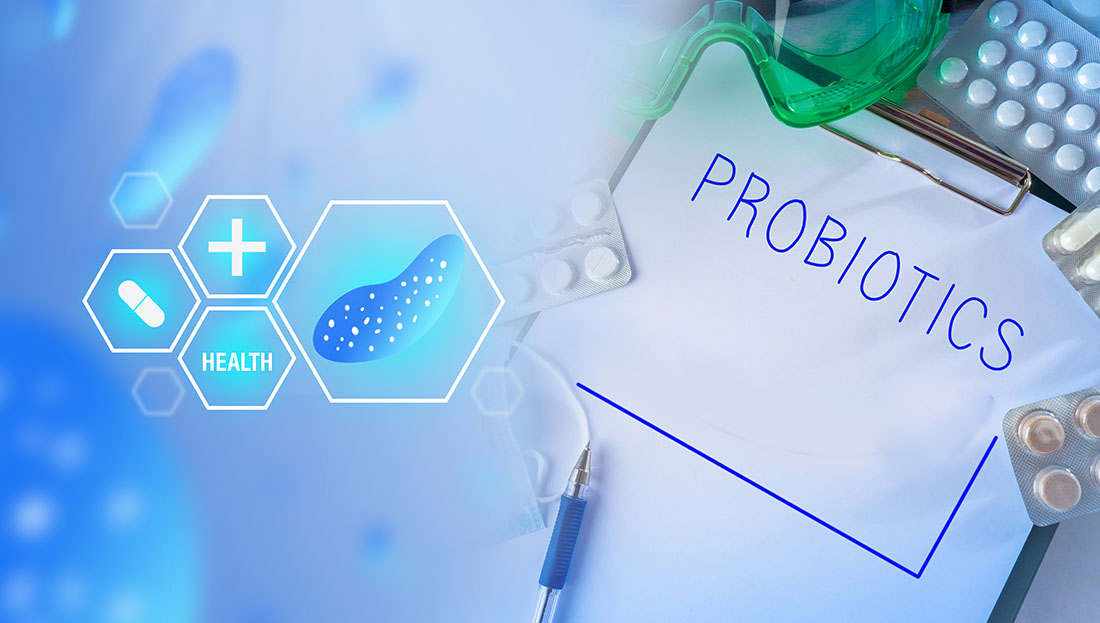
In this series, ACE experts answer your health and exercise questions. From high-intensity interval training to youth fitness, you’ll find detailed answers to many of the questions that may come up in your work with clients. If you have questions you’d like to ask our experts, please email us at Christine.Ekeroth@acefitness.org.
The Expert: Dominique Adair, MS, RD, is a private-practice nutrition and fitness advisor, public speaker, educator, media consultant, and freelance health and nutrition writer. Since 1990, she has helped guide hundreds of clients through in-person and digital counseling and has established herself as an internationally recognized speaker on nutrition, metabolism and fitness. Additionally, Adair has worked extensively with the entertainment industry as well as collegiate and professional athletes, specializing in evidenced-based performance nutrition without compromising optimal health. Adair is a member of ACE’s Scientific Advisory Panel and serves as an advisor and on-air commentator to electronic and print media including the traditional commercial broadcast television networks, as well as CNBC, CNN and others. An avid hiker, cyclist and fitness enthusiast, she lives with her son in New York.
Q: With so much information about the importance of the gut biome, should everyone be taking probiotics (kind of like a multivitamin is generally considered a good idea)?
The microbiome is getting a lot of attention these days. Researchers and clinicians are exploring the role of the microbiome in inflammatory diseases such as bowel disease, heart disease and arthritis, as well as possible contributions to obesity and even dementia. Autoimmune diseases such as diabetes, rheumatoid arthritis, muscular dystrophy, multiple sclerosis and fibromyalgia have also been associated with dysfunction in the microbiome. The basic theory is that disease-causing microbes can accumulate over time, changing gene activity and metabolic processes, and resulting in an abnormal immune response against substances and tissues normally present in the body.
The term microbiome is best understood by unpacking the word. Micro means extremely small, and biome is a complex community characterized by distinctive species, maintained under the climatic conditions of that region. When scientists study the human microbiome, they are looking at a community of microorganisms living in the human body. The human body is home to about 100 trillion bacteria and other microbes, collectively known as your microbiome. While these organisms are omnipresent in our bodies, they are in largest concentration in certain areas, so research has concentrated on the skin, mouth, nose, colon and vagina. The term "gut microbiome" refers specifically to those organisms that live in the colon, also known as the large (or lower) intestine.
The microbiome is the genetic material of all the microbes—bacteria, fungi, protozoa and viruses—that live on and inside the human body. The number of genes in all the microbes in one person’s microbiome is believed to be 200 times the number of genes in the human genome, and to weigh as much as 5 pounds. To put it in another context, the ratio of microbial cells to human cells in the human body is 1:1.
Worldwide research initiatives have mapped the human microbiome. One initiative is the Human Microbiome Project (HMP) sponsored by the National Human Genome Research Institute (NHGRI), which is part of the National Institutes of Health (NIH). The HMP launched in 2007 as an extension of the Human Genome Project. The purpose of this feasibility study was to examine the human microbiome as a supraorganism composed of non-human and human cells, with the goal of describing the human microbiome and analyzing its role in human health and disease.
Research confirms that many of the organisms in the microbiome are helpful. For example, the bacteria in the colon microbiome help digest food, regulate the immune system, protect against other bacteria that cause disease, and produce vitamins including thiamine, riboflavin, and vitamins B and K. In general, these bacteria are beneficial colonizers rather than harmful invaders.
We have seen enormous progress in the last decade in using genomic sequencing coupled with computational pipelines to decipher the human gut microbiome. These tools are necessary because of the incredible information density of the microbiome. Consider this: Each teaspoon of stool contains in its bacterial DNA an amount of data that is so great it would require 100,000 of today’s highest-capacity thumb drives to store all of it.
Individuals can differ greatly from one another in terms of their gut microbiomes. Much of this diversity remains unexplained, although diet, environment, host genetics and early microbial exposure have all been suggested as possible factors. The diversity of microbes within a given body habitat can be defined as the number and abundance distribution of distinct types of organisms, which have been linked to several human diseases. But low- or high-density doesn’t always mean “good” or “bad,” and scientists generally don’t use these labels; rather, they try instead to evaluate the totality of the microbiome. For example, whether a particular species or strain is helpful or harmful depends on what other bacteria are present, their density and how they interact with each other.
Currently, the gut microbiome is an area of intense clinical interest and innovative treatments. For example, fecal microbiota transplantation (FMT or fecal transplantation) is a clinical procedure that restores healthy bacteria in the colon by introducing stool via colonoscopy or enema from a healthy human donor. Potentially fatal clostridium difficile infections (CDI) have been cured using FMT to restore healthy gut microbiota. FMT is also used to treat colitis, constipation and irritable bowel syndrome. Using healthy human waste to treat illness is not a new practice, with records of bacteriotherapy dating as early as the fourth century in ancient Chinese medicine. However, it wasn’t until the publication of a study in The New England Journal of Medicine in 2013 that FMT took off in current clinical research and practice.
Given the importance of the microbiome to overall health and well-being, nutrition scientists are studying the use of nutrition (including supplements) to benefit the gut microbiome. Dietary nutrients, including probiotics, may be converted into metabolites by intestinal microbes that serve as biologically active molecules affecting our regulatory functions. Probiotics may restore the composition of the gut microbiome and introduce beneficial functions to gut microbial communities, resulting in improvement or prevention of gut inflammation and other intestinal diseases.
Probiotics 101
The Food and Agricultural Organization of the United Nations and the World Health Organization define probiotics as “living microorganisms, which when administered in adequate amounts may confer health benefits on the host." Nobel laureate Elie Metchnikoff introduced the concept of probiotics to the scientific community in 1907 after publishing a seminal report linking the longevity of Bulgarians with the consumption of fermented milk products containing viable Lactobacilli. His observation suggested that certain microbes, when ingested, could be beneficial for human health. Since then, probiotics have been widely marketed and consumed, mostly as dietary supplements or functional foods. Mechanisms of probiosis (an association of two organisms that enhances the life processes of both) include the manipulation of intestinal microbial communities, suppression of pathogens, immunomodulation, stimulation of epithelial cell proliferation, and differentiation and fortification of the intestinal barrier.
Probiotics are live microorganisms that, when administered in adequate amounts, may confer a health benefit on the host. You can get probiotics from supplements, as well as from foods prepared by bacterial fermentation. Probiotics may contain a variety of microorganisms. The most common are bacteria that belong to groups called Lactobacillus and Bifidobacterium. Other bacteria may also be used as probiotics, as may yeasts such as Saccharomyces boulardii.
Different types of probiotics may have different effects. For example, if a specific kind of Lactobacillus helps prevent an illness, that doesn’t necessarily mean that another kind of Lactobacillus or any of the Bifidobacterium probiotics would have the same effect.
Prebiotics are not the same as probiotics. Prebiotics are nondigestible food components that selectively stimulate the growth or activity of desirable microorganisms. According to an NIH survey, about 4 million U.S. adults (1.6%) use probiotics or prebiotics. Among adults, probiotics or prebiotics were the third most commonly used dietary supplement other than vitamins and minerals, and the use of probiotics by adults quadrupled between 2007 and 2012.
Individual countries impose a range of regulations on the sale of probiotics, in part because they are sold as both supplements and functional foods, which often fall to the regulatory authority of different agencies. For public health and safety reasons, a great deal of research has been done on probiotics. For example, probiotics have shown promise for the prevention of antibiotic-associated diarrhea (including diarrhea caused by Clostridium difficile), prevention of necrotizing enterocolitis and sepsis in premature infants, treatment of infant colic, treatment of periodontal disease, and induction or maintenance of remission in ulcerative colitis.
However, in many instances, we still don’t know which probiotics are helpful and which are not. We also don’t entirely know how much of a probiotic would need to be consumed or who would be most likely to benefit. Even for the conditions that have been studied in depth, researchers are still working toward finding the answers to these questions.
Probiotics and the Microbiome
Recent discoveries related to the structure and function of the microbiome suggest that diet and supplements may have a direct impact on the intestinal microbiota and human health status.
Probiotics have been proposed as preventive and therapeutic measures to restore the healthy composition and function of the gut microbiome. Well-designed experiments in appropriate experimental models (in vitro or in vivo) may yield insights into probiotics, biology and potential manipulation of the microbiome in the human host. Researchers believe that new types of probiotics or medicinal compounds derived from the microbiome may be used as future strategies to promote health, prevent disease and treat different disorders. For example, probiotics might be helpful to the microbiome by:
- Affecting its overall composition and function
- Producing antimicrobial agents or metabolic compounds that suppress the growth of other harmful microorganisms
- Impacting the global metabolic function of the intestinal microbiome and modulating the intestinal immune system through production of secreted factors and metabolites that affect the growth and function of intestinal epithelial and immune cells
Given that we all have a microbiome, should everyone take a probiotic? In returning to the original question, it’s a good idea to revisit the term “supplement.” We supplement (pills, potions, powders and functional foods) when our diets are deficient. There is a school of thought that says even if your diet is perfect, supplementing “can’t hurt.” Multivitamins, in particular, are often referred to as an “insurance policy” to protect against a patch of less-than-ideal eating. The “can’t hurt” suggestion, however, is not altogether true. For most healthy people, a multivitamin is unlikely to present a problem. Unfortunately, there is an exceptionally high number of people who are not, in fact, healthy and are unaware that they have a chronic disease. Chronic kidney disease (CKD), for example, affects an estimated 37 million people in the U.S. (15% of the adult population; more than one in seven adults), and approximately 90% of those with CKD don’t know they have it. With a decline in kidney function comes the possibility of impaired ability to get rid of excess minerals such as phosphorus and potassium. Therefore, a multivitamin that contains minerals that might not present harm to most people could actually be a very poor choice for someone whose kidneys were not working at 100%.
While most people take a probiotic supplement thinking it will boost their digestive health, there is evidence suggesting that probiotics may not work for everyone and may potentially be harmful in some situations. In a study published in Cell, researchers measured gut microbiome levels in participants. Half were given a generic probiotic supplement while the other half were given a placebo. The probiotic strains failed to colonize—or live—in the gut of many of the patients, meaning the probiotic was ineffective.
Probiotics are often taken in conjunction with antibiotics, with the rationale that the antibiotics are unable to discriminate the “bad” versus the “good” bacteria and therefore eliminate both. Supplementing with probiotics is purported to replace the “good” bacteria that have been wiped out by the antibiotic, but what does the research say? Another study, also published in Cell, examined whether giving probiotics after a course of antibiotics helps the gut microbiome return to normal. Researchers divided volunteers that were given antibiotics into three groups: The first watched and waited for the microbiome to return to normal without any intervention; the second was given a generic probiotic; and the third was given a microbiome transplant containing the person’s own bacteria [autologous fecal microbiome transplantation (aFMT)] before being given an antibiotic. While it took months for the microbiome to return to normal in the control and probiotics groups, it took only days for the third group to return to normal, meaning that taking probiotics in conjunction with antibiotics did not impact the microbiome more than doing nothing at all.
While probiotics have an extensive history of apparently safe use, there remains a large opportunity to fill in the clinical knowledge gaps with future research on the efficacy as well as the frequency and severity of side effects, especially in certain populations.
Some clinicians believe that the risk of harmful effects from probiotics is greater in people with severe illnesses or compromised immune systems. Possible harmful effects of probiotics include infections, production of harmful substances by the probiotic microorganisms and transfer of antibiotic resistance genes from probiotic microorganisms to other microorganisms in the digestive tract. As with any supplement, there’s always the risk of cross contamination with other compounds and this is also the case with other microorganisms and probiotics.
It is worth keeping an eye on the research regarding probiotics and the microbiome, as there is sure to be extensive future investigation into the interaction between the two. As is the case with any supplement you might consider taking, be sure to consult your healthcare provider first (and urge your clients to do the same) so they can determine if the benefits of the supplement outweigh any potential risks.
Don’t Miss This Free Live Webinar:
Nutrition for Health Promotion, Part 2: Risks and Benefits
More and more exercise and health professionals are working closely with clients with chronic diseases related to their lifestyle. It’s important to provide these clients evidence-based information on what to do, how to do it and direction on referrals while guiding them through lifestyle change.
Personalized nutrition uses diagnostic tools to identify how a person’s unique molecular and genetic profile might predispose them to or protect them from certain diseases. This information can then be used to tailor interventions i.e. diet, exercise, medication, etc. While personalized nutrition plans are outside the scope of practice for exercise professionals, a better understanding of what genetic and epigenetic factors may impact a client’s lifestyle, disease risk and ultimately their health is essential to providing the best care and service.
With terminology and basic concepts covered in Part 1 (which you can view here), this webinar examines the benefits, risks and applications of lifestyle interventions more closely.
Led by Dominique Adair, MS., RD., a nutrition and fitness advisor, public speaker, educator, writer and President of Adair Fitness and Nutrition along with Alison Steiber, Ph.D., a registered dietician nutritionist and Chief Science Officer at the Academy of Nutrition & Dietetics, you will gain a deeper understanding of the important factors that affect your clients individually so that you can better help them along their journey toward better health.
Mark your calendars for 11 a.m., PST, November 18, 2020, to attend this live webinar.





 by
by 


